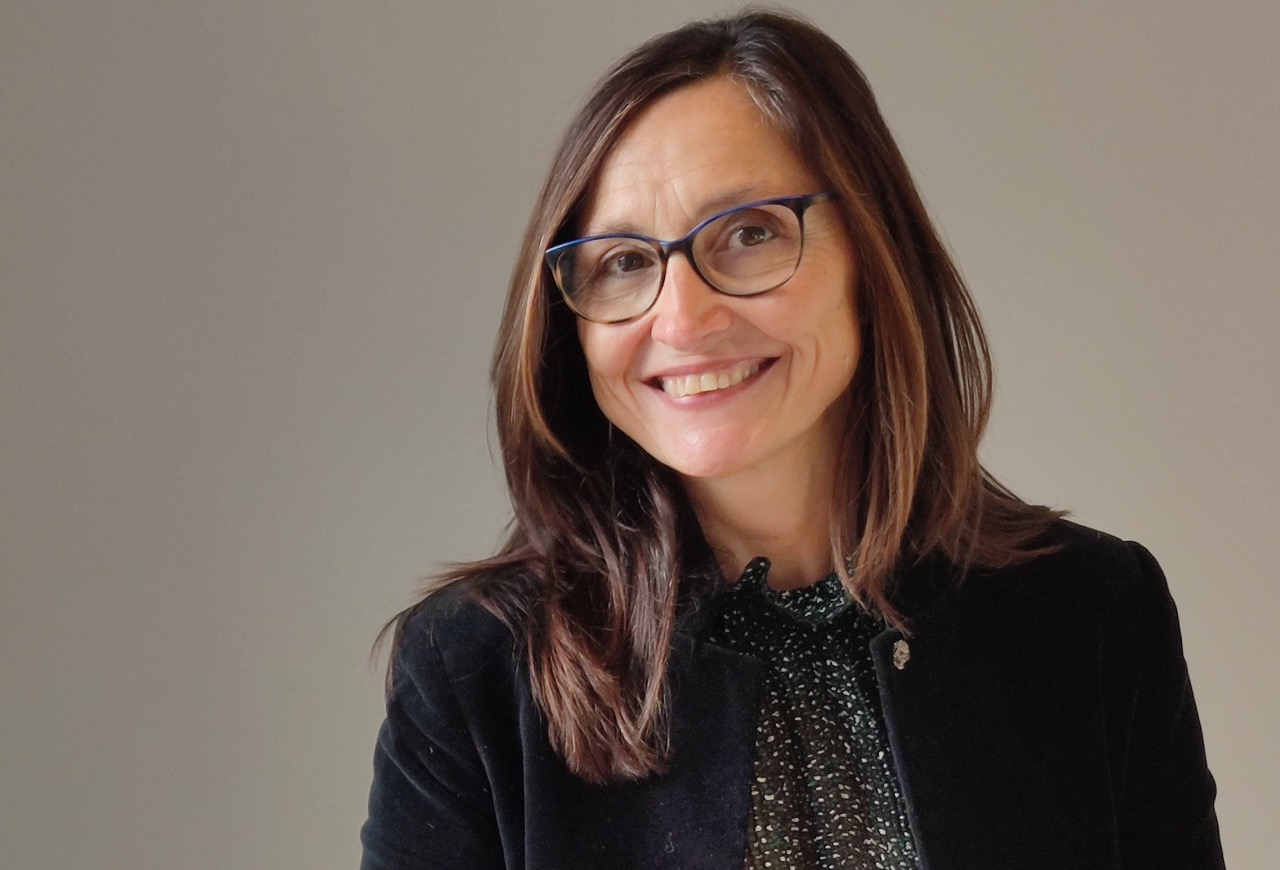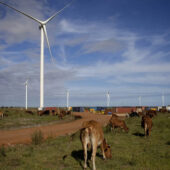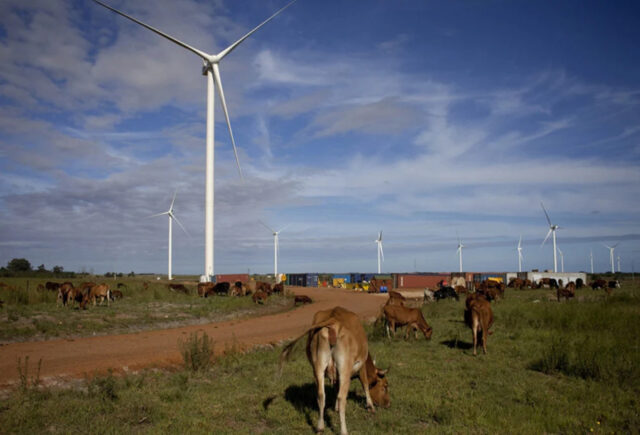Roberta Bosurgi, CEO of the European Venture Philanthropy Association, reflects on the organisation’s efforts to bring philanthropic purpose and investment practice together, and the need for the sector to join forces to maximise impact

CV
- CEO, European Venture Philanthropy Association, 2020-present
- Pricing & Access Director (Asia Pacific Middle East and Africa), Novartis, 2019- 20
- Head of Alliances and Policy, Novartis Foundation 2016-19
- Various posts, Novartis, 2010-16
- Engagement Manager, McKinsey & Company, 2000-08
When Roberta Bosurgi took over as CEO of the European Venture Philanthropy Association (EVPA) in September 2020, the environment was very different from when it was created in 2004, when the concepts of philanthropic and impact investment in social enterprises were relatively new.
“EVPA was founded to bring the principle of venture philanthropy from the US into Europe, because there was nothing equivalent to that vision of bringing philanthropic purpose and investment practice together. While there is a lot still to do, the sector is now miles ahead of where it was 18 years ago,” Bosurgi says.
Venture philanthropy, as defined by EVPA, has three main elements. Firstly, the need to tailor financing to meet the specific needs of social enterprises – whether it be a grant, loan, or equity stake. Secondly, a strong focus on non-financial support via mentoring and training. And, thirdly, the consistent measurement of progress against a set of defined impact objectives.
Bosurgi arrived at EVPA at what she describes as an “inflection point” for an organisation primed to play an important role in mobilising resources for impact as part of efforts to rebuild more equitable and resilient economies after the Covid pandemic.
“I have a deep belief that overcoming economic inequalities in the long term depends on developing a sustainable model for growth of social enterprises, to ensure livelihoods are secure.”
“Charity donations can be a catalyst and enabler of proof of concept, but money could run out at any moment. So, when the opportunity arose to work with EVPA it was a fantastic opportunity to bring my business experience to this space,” adds Borsugi, who previously held various executive roles at Swiss-based healthcare company Novartis and the Novartis Foundation.
Diverse membership
EVPA’s growth mirrors the rapid expansion the impact investment sector, but it has also been driven by drawing in a more diverse set of members.
“We have gone from a core membership of capital providers and impact funds to a broader set of stakeholders, including foundations, larger mainstream investors and asset managers, corporate social investors, and academic institutions,” says Bosurgi.
“We have one of the most engaged communities – they aren’t just names on a database. But at the same time, they have very diverse needs.”
Roberta Bosurgi, EVPA
From an initial grouping of around 10 members, EVPA’s membership has grown to around 300 organisations. It provides them with a focal point for capacity building, funding information and networking opportunities for investing for impact both within Europe and elsewhere in the world.
In addition to numerous corporate and family foundations, members include financial services firms, such as Allianz and BBVA, international institutions such as the European investment Bank (EIB) and the European Bank for Reconstruction and Development (EBRD), as well as impact service providers and academic partners.
This varied membership is both a strength and a challenge. “We have one of the most engaged communities – they aren’t just names on a database. But at the same time, they have very diverse needs,” she says.
EU collaboration
Newcomers in the impact space go to EVPA to learn more about how they can play a role in impact investment and connect with peers that have done it before. Others are looking for co-funders or project partners. Then there is EVPA’s close relationship with European Union policy and funding institutions, which also attracts new members.
“Some come for the deep collaboration that we have with the EU, to get a good understanding of what’s going on among the institutions, and also for us to add some support in accessing EU funding, because we also help provide a platform for dissemination of new funding opportunities,” Bosurgi says.
The EU has provided financial backing to develop internal competencies at EVPA, allowing the association to carry out research, and jointly create the social impact ecosystem across the continent.
The relationship has allowed EVPA to develop more of a thought partnership with the EU, rather than just being an implementing partner. EVPA staff also sit on some EU advisory councils.
“It’s a collaboration that’s working incredibly well for our members, because they can really voice their point of view, and for the European Commission (EC), because it makes sure that funds get disbursed where they need to be and that they have their ears to the ground,” says Bosurgi.
Competing for funding
Obtaining funding for higher-risk investments in small-scale social enterprises necessary to establish the sector has always been a challenge.
Institutions such as the EIB and the European Investment Fund (EIF) have not traditionally targeted or been equipped to handle long-term, so-called “patient”capital investments that require a lot of hands-on support.
Now, social investors are increasingly finding themselves in competition for funding with big institutional investors moving into the sustainable development and social investment arena, who tout the prospect of market rate returns on investments in relatively low-risk projects, such as scaling up already established social enterprises,
While this targets one form of impact investment, it risks diverting funding away from a swathe of investors focused on nurturing entrants into the social enterprise sector.
“Some of this capital comes with a strong message that you can do impact investing, while also achieving market rate financial returns. This creates a misleading narrative that risks pushing out the smaller funds,” says Bosurgi.
“The reality is that when you build a market, you need to take some risks and you cannot guarantee the returns. The narrative shouldn’t just be that you can do well financially, while doing good. It should be centred on what type of impact you are trying to create.”
According to Bosurgi, if impact investors offering more flexible, tailored funding and hands-on, non-financial support are starved of funding then the entire sector will run into problems. “They address the ‘valley of death’, which, if nobody invests there, will mean there will be no pipeline of smaller enterprises to scale up.”
“Some of this capital comes with a strong message that you can do impact investing, while also achieving market rate financial returns. This creates a misleading narrative that risks pushing out the smaller funds”
As all forms of impact investment are required for the sector to thrive, closer cooperation is required to overcome the divide between the big institutional investors and social investors and ensure available funding gets to where it is most needed.
“At the moment, they don’t really talk the same language or move in the same circles. This is the challenge for us as a community. How do we all sit at the same table and identify opportunity for collaboration, and to really make sure that there is enough funding for each sub segment?” Bosurgi says.
Progress and challenges
Recent progress towards implementing a unified policy framework for social investments outlined in the EC’s Social Economy Action Plan is welcomed as a recognition of the role the social economy can play in the post-Covid world.
Bosurgi also regards as positive steps towards decentralising decision-making on how to spend much of the EC’s post-Covid recovery to member states, and greater collaboration between the EIB, EIF, and National Promotional Banks on how best to target social investment.
“One of the elements of the latest plan is an understanding that for funding to be close to the ground, it needs to be driven by local priorities,” she says.
EVPA’s role in terms of investment within Europe over the coming years will reflect the challenges faced by the impact investment sector as a whole.
At one end of the spectrum, that means pushing for greater access to “patient” social investment in countries where the social enterprise sector is already firmly established.
This includes pushing for clarification of the status of the foundations that make up much of EVPA’s membership. Some engaged grant makers would like to do more than they are currently permitted to in terms of investment, but the legal and fiscal constraints in some European countries on what they can and cannot do beyond simply dispensing grants remain unclear.
At the other end of the spectrum, EVPA will be helping to establish a viable sector in regions such as eastern Europe, to allow for meaningful social impact investment in the first place.
“That’s where EVPA is playing more of a role as an ecosystem builder, because in those countries the supply of capital is not the key bottleneck, it’s the demand. It’s not too different to what we were doing everywhere on the continent two decades ago,” Bosurgi says.





